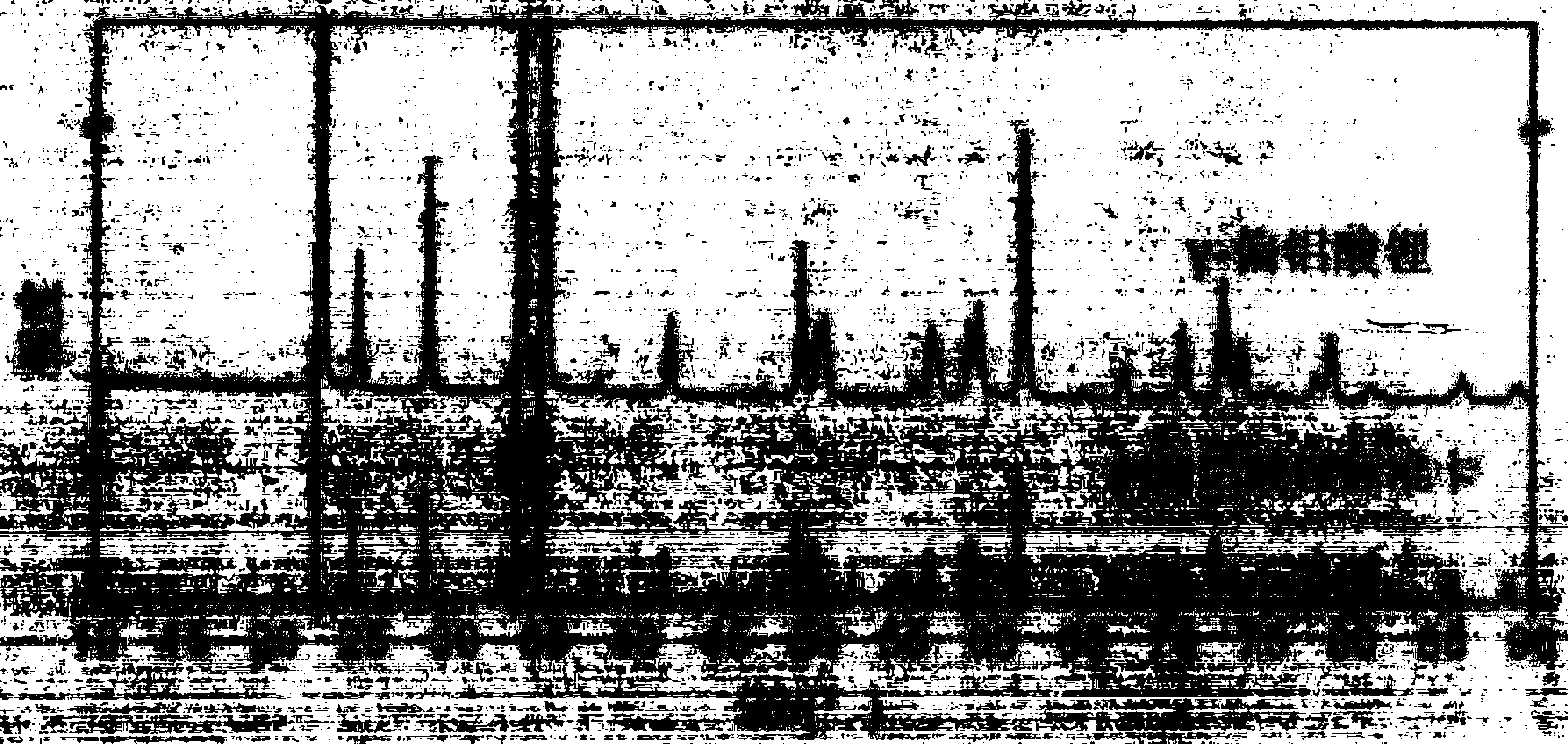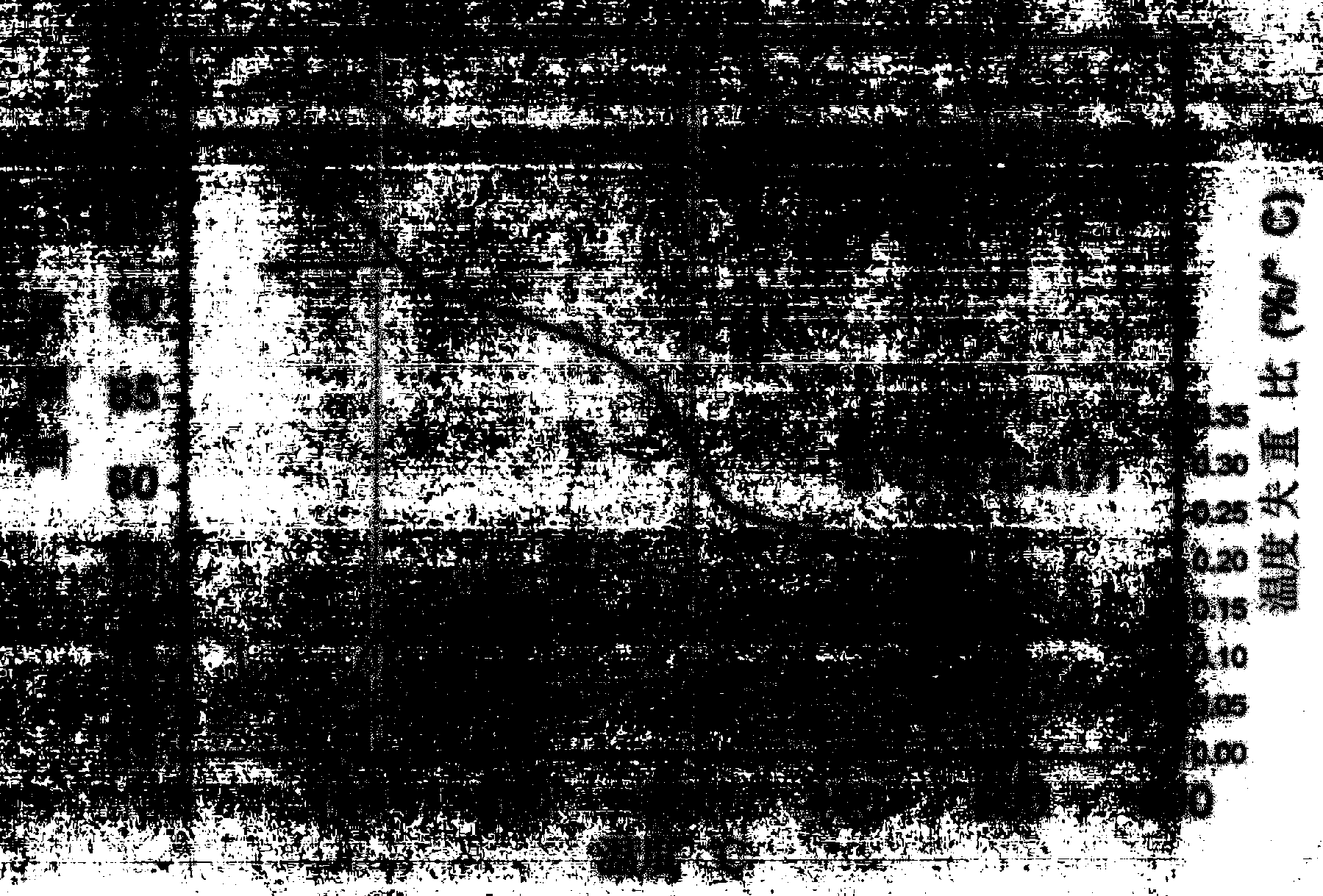Organic/inorganic composite electrolyte and preparation method thereof
An inorganic composite and electrolyte technology, which is applied in the manufacture of electrolyte batteries, electrolytes, non-aqueous electrolyte batteries, etc., can solve problems such as weakening, and achieve the effects of improving dispersion, easy molding and processing, and improving comprehensive performance.
- Summary
- Abstract
- Description
- Claims
- Application Information
AI Technical Summary
Problems solved by technology
Method used
Image
Examples
preparation example Construction
[0054] The preparation method of γ-lithium metaaluminate is as follows:
[0055] A certain proportion of nano-lithium carbonate and nano-alumina are dispersed in ethanol at a certain solid content, ball milled for 24 hours, dried, and sintered in a muffle furnace at 1000°C to obtain the required γ-lithium metaaluminate.
[0056] The modification method of γ-lithium metaaluminate is as follows:
[0057] 1) Add self-made lithium metaaluminate into hydrogen peroxide and soak for 5 to 48 hours, wash away the hydrogen peroxide, and dry to obtain oxidized lithium metaaluminate.
[0058] 2) Mix the oxidized lithium metaaluminate with the silane coupling agent vinyltrimethoxysilane (A-171) and toluene, and react under reflux for 2 to 48 hours. The unreacted silane coupling agent is washed away with ethanol, filtered and dried to obtain a modified inorganic solid electrolyte.
[0059] Among them, the raw materials used above: lithium carbonate: Aladdin Reagent Co., Ltd.; nano-alumina...
Embodiment 1
[0073] (1) 1 g of polyoxyethylene-polystyrene block copolymer (number average molecular weight 240,000, oxyethylene repeating unit mass percentage 12.1%) was dissolved in chloroform to obtain solution 1;
[0074] (2) Weigh 0.0632 g of lithium bistrifluoroimide sulfonate according to the ratio of lithium salt to oxyethylene repeating unit 0.08:1 and dissolve it in tetrahydrofuran to obtain solution 2;
[0075] (3) Add solution 2 to solution 1 and stir for 24 hours to obtain solution 3;
[0076] (4) Then add 0.03g of modified lithium metaaluminate to solution 3, mechanically stir (rotating speed 350rpm) for 48 hours to make the system mix uniformly, remove all solvents, and obtain organic / inorganic composite electrolyte;
[0077] (5) The obtained organic / inorganic composite electrolyte is made into a 10% N-methylpyrrolidone solution and cast on a silicon wafer, and the solvent is removed at 60° C. to obtain an organic / inorganic composite electrolyte membrane with a thickness of ...
Embodiment 2
[0080] (1) 1 g of polyoxyethylene-polystyrene block copolymer (number average molecular weight 128,000, oxyethylene repeating unit mass percentage 29.3%) was dissolved in chloroform to obtain solution 1;
[0081] (2) Weigh 0.153 g of lithium bistrifluoroimide sulfonate according to the ratio of lithium salt to oxyethylene repeating unit 0.08:1, and dissolve it in tetrahydrofuran to obtain solution 2;
[0082] (3) Add solution 2 to solution 1 and stir for 24 hours to obtain solution 3;
[0083] (4) Then add 0.15 grams of modified lithium metaaluminate to the solution 3, mechanically stir (rotating speed 350rpm) for 48 hours to make the system mix uniformly, remove all solvents, and obtain an organic / inorganic composite electrolyte;
[0084] (5) The obtained organic / inorganic composite electrolyte is made into a 5% concentration of N-methylpyrrolidone solution and cast on a silicon wafer, and the solvent is removed at 60° C. to obtain an organic / inorganic composite electrolyte m...
PUM
| Property | Measurement | Unit |
|---|---|---|
| ionic conductivity | aaaaa | aaaaa |
| particle diameter | aaaaa | aaaaa |
| particle diameter | aaaaa | aaaaa |
Abstract
Description
Claims
Application Information
 Login to View More
Login to View More - R&D
- Intellectual Property
- Life Sciences
- Materials
- Tech Scout
- Unparalleled Data Quality
- Higher Quality Content
- 60% Fewer Hallucinations
Browse by: Latest US Patents, China's latest patents, Technical Efficacy Thesaurus, Application Domain, Technology Topic, Popular Technical Reports.
© 2025 PatSnap. All rights reserved.Legal|Privacy policy|Modern Slavery Act Transparency Statement|Sitemap|About US| Contact US: help@patsnap.com



